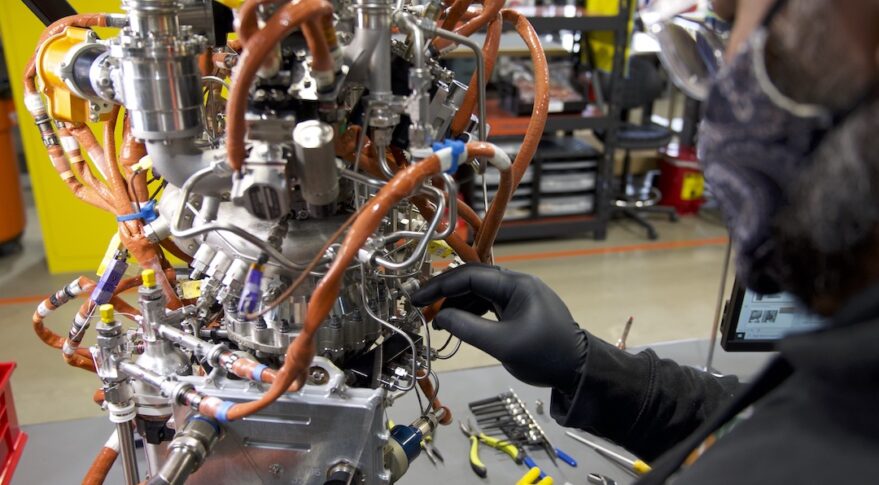
WASHINGTON — Rocket propulsion startup Ursa Major announced Aug. 31 it won a U.S. Air Force contract to support the development of the company’s Hadley liquid engine for small launch vehicles.
The $3.6 million deal is a small business innovation research contract known as a TACFI, or Tactical Funding Increase that includes both government and private funds.
“This partnership is one example of how the federal government is furthering its research and development progress by engaging with our country’s promising entrepreneurs and innovators,” Shawn Phillips, chief of the Air Force Research Laboratory’s rocket propulsion division, said in a statement.
Ursa Major founder and CEO Joe Laurienti said the company has been manufacturing and testing the 5,000-pound thrust Hadley at its facility in Berthoud, Colorado. The agreement with the Air Force would give the 3D-printed engine a “stamp of approval” and increase customers’ trust in the technology, he said.
“It’s a big deal for us,” Laurienti told SpaceNews.
AFRL has been a customer of the Hadley engine — which uses liquid oxygen and kerosene propellants — to power the X-60A airdropped rocket designed for hypersonic flight research. The program supports Air Force plans to develop hypersonic missiles.
Under the AFRL contract, Ursa Major will test the engine’s performance in more strenuous flight conditions than what is normally expected by commercial customers, said Laurienti. “It’s really a broad qualification campaign.”
This agreement “validates the dual use nature of this engine that we’ve been so so aggressive about,” he said. “The same engine should work for a commercial launcher or a government launcher without being more expensive.”
The qualification test campaign will seek to demonstrate that Hadley “operates safely and reliably within the power level and mixture ratio required for missions of DoD interest,” Laurienti said.
The qualification will involve multiple Hadley engines and the Air Force will get data on measurements of specific impulse, or ISP, combustion stability, vibration and shock profiles, and range of inlet pressures and temperatures, he said.
Ursa Major is producing about 30 Hadley engines a year for the Air Force and several commercial customers, including small launcher startup Phantom Space and Stratolaunch, which uses a massive carrier to launch rocket-powered hypersonic vehicles.
Laurienti said the company so far this year has delivered 12 engines. Following an $85 million funding round last year, Ursa Major’s workforce has grown to 250 employees.
The company is developing a larger engine called Ripley, which can generate 50,000 pounds of thrust.
“We’re going larger and larger,” said Laurienti. “I don’t think that’s necessarily because we see a diminishing demand in the small launch space. It’s more because we see more versatile opportunities in larger vehicles.”